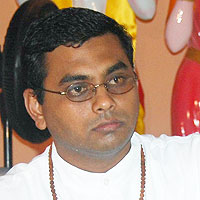Culture is defined as a way of life based on ideas, beliefs, customs and practices. A landmark of Hinduism is its rich culture of traditions, food, dress, festivals, religion etc. How vibrant a culture is depends on the intensity of its practice. So how vibrant is Hinduism in our homes? Do we light deeya, offer jal, say mantras, use the greeting “sitaram” on a daily basis? Do our children know how to respond correctly when asked why their gods have many hands, wear snakes as garlands, or have a monkey or elephant face?
A society cannot exist without culture. Culture gives society its identity. Society has established that the family is responsible for teaching cultural practices to its members. Therefore patriarchs and matriarchs of hindu homes have a crucial role to play in this regard. Authentic foods must be cooked, including teaching the art of cooking (how to ‘chonkay a good dhal’), traditional clothes must be worn, festivals must be observed and young family members must be exposed to the art forms of dance, music etc. Children are the biggest mimics of all time. Whatever the adults practise, children will follow.
Practice of our Hindu culture affords us so many merits. The gaiety and splendour of Phagwa fill us with fun times; the sanctity of Divali brings experiences of spirituality and unity, Raksha Bandhan enhances bonding and the close-knit relationship we traditionally share with grandparents, other elders and the family pundit provides us with on the spot mentors, counsellors and advisors. More importantly, practice of our culture provides us with an identity of who we are. According to psychologist Abraham Maslow, identity fulfils our psychological and social need of having a sense of belonging, self-worth and good self esteem, all necessary tools for healthy growth and development. This sense of identity may provide good defence mechanisms for our children against the threat of assimilation into other cultures.
We raise our hands in unity and proclaim “hum hindu hain” when called upon to do so by our pundits.But our pride must go way beyond words. We must become publicly proud as the Hare Krishna devotees (white in ethnicity), who will walk through crowded modern, western Florida South Beach dressed in dhoti and sari, chanting God’s name and dancing to the beat of dholak and the chimes of manjeera. We must wear our kurta as proudly as Brad Pitt did on his visit to India. We should publicly glorify our culture like the non-hindu yoga instructors who willingly use the terms vinyasa, asanas and who at the end of their demonstration will clasp their hands, bow and say Namaste.
Hindu families can ensure the preservation of their culture by simply passing on the baton of dharma to their children. They can do so by transmitting the traditions, way of life, customs and beliefs from one generation to another to continue the links with our forefathers and so keep our cultural heritage alive.
Mrs. Mala Persad


